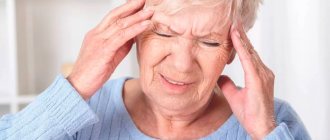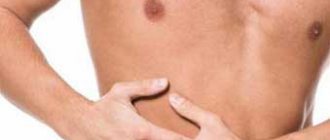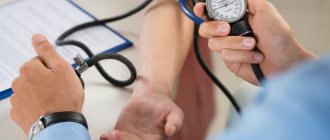Heart neurosis: causes, symptoms and treatment
04.10.2021
Cardiac neurosis is often confused with serious cardiovascular diseases, even a heart attack. Manifested by chest , arrhythmia or shortness of breath. However, the cause is not atherosclerosis or heart failure, but disorders of the nervous system caused by severe or chronic stress, and often also by traumatic experiences. How to distinguish an anxiety disorder from cardiovascular disease? What is the diagnosis and treatment of cardiac neurosis ? How does this increasingly common disease manifest itself?
What is cardiac neurosis and what are its causes?
Cardiac neurosis is a type of anxiety disorder that causes physical symptoms in the cardiovascular and nervous systems. Therefore, the disease is psychological in nature. Its most common cause is severe or prolonged stress, previous trauma (for example, death of a loved one, serious accident, etc.), as well as depression or phobias . The result is symptoms similar to cardiovascular disease, which is another reason for stress and panic. Patients visit a cardiologist , but no abnormalities are found during a heart .
The immediate cause of cardiac neurosis is the increased sensitivity of the heart muscle to stress or anxiety. This is due to overload of the nervous system and excessive production hormones - cortisol, adrenaline and norepinephrine. They stimulate the heart muscle to work harder, which produces almost the same symptoms as serious cardiovascular diseases.
Symptoms of cardiac neurosis
Cardiac neurosis produces a number of symptoms typical of arrhythmias, coronary heart disease or heart attack . They appear both during the day and at night. The most common symptoms include chest described as oppressive or pressing, rapid heartbeat, shortness of breath, and dizziness . Many people also complain of muscle tremors and numbness, hot flashes, sweating, high blood pressure, nausea and vomiting. Almost identical symptoms appear after a heart attack or stroke. Somatic symptoms are also accompanied by intense fear, anxiety, panic attack and even a belief in imminent death.
In the intervals between attacks of cardiac neurosis, there may be other signs of the nervous system , which are the result of severe stress and constant tension. These include memory and concentration problems, problems falling asleep, depression and even suicidal thoughts.
Diagnosis and treatment of cardiac neurosis
neurosis based on tests that will exclude possible cardiovascular diseases. Therefore, an ECG of the heart is necessary, as well as blood test , which can identify dangerous defects affecting the heart .
Treatment of cardiac neurosis is based on psychotherapy aimed at eliminating possible injuries. Relaxation techniques and regular but moderate exercise are also helpful. In addition, you need to change your lifestyle - avoid stress, find time for relaxation and rest. In some cases, sedatives and antidepressants . However, it is worth knowing that they can mask the development of the disease. The support of loved ones is very important.
Published in Neurology Premium Clinic
Neurological and somatic disorders in anorexia nervosa
- Neurological disorders: false atrophy of the neuron cortex of the gray and especially white matter of the brain (visibly disappearing as weight increases), decrease in brain volume, dilatation of the ventricles of the brain, peripheral neuropathy, headaches, possible appearance of a convulsive syndrome.
- Cardiovascular disorders may be the main cause of death in patients (10%): cardiomyopathy; sinus bradycardia and decreased blood pressure due to malnutrition; changes in the electrocardiogram (low voltage, deviation of the heart axis to the right, arrhythmias, supraventricular extrasystoles, ventricular tachycardia, prolongation of the QT segment - a predictor of arrhythmia and the threat of death, inversion or flattening of the T-wave, depression or elevation of the ST segment, as a consequence of electrolyte metabolism disorders) ; changes in the echocardiogram (reduction in heart size, reduction in the size and weight of the left ventricle due to impaired systolic function, contractility of the left ventricle, mitral valve prolapse without significant mitral regurgitation).
- Metabolic disorders: hypothermia, changes in blood sugar concentration (hypoglycemia, signs of diabetes insipidus), hypercholesterolemia (impaired lipoprotein metabolism; at the first stage of anorexia, cholesterol in the blood can increase due to the release of cholesterol from the liver tissue, then fall again due to a decrease in the level hormone T3), changes in creatine phosphokinase levels; disorders of water and electrolyte metabolism: signs of dehydration (dry skin), azotemia, hypochloremic alkalosis, hypokalemia, hyponatremia, hypophosphatemia, hypomagnesemia, metabolic acidosis and alkalosis, the latter appears due to frequent vomiting.
- Hormonal disorders: decreased levels of follicle-stimulating and luteinizing hormones (amenorrhea), decreased vasopressin (hypotension), decreased blood levels of sex hormones, testosterone (osteopenia, decreased libido, impaired puberty), estrogens: progesterone and estradiol (amenorrhea, cortical and trabecular osteopenia parts of the bone, decreased libido and dyspaurenia - pain during sexual intercourse); decreased norepinephrine (bradycardia, hypothermia, hypotension, depression), decreased leptin (decreased appetite, amenorrhea), increased levels of corticotropin-releasing hormone (appetite suppression), decreased beta-endorphins (eating disorders, suppressed activity of the muscles of the antrum of the stomach), decreased ratio T3/T4, changes in the level of triiodothyronine-T3 (decreased energy metabolism, weakness, euthyroidism), increased cortisol (a consequence of stimulation of the pituitary-adrenal axis - a factor indirectly contributing to osteopenia), increased growth hormone, impaired insulin secretion.
- Gastroenterological disorders: impaired contractile function of the antrum of the stomach, atrophy of the gastric mucosa, gastritis with low acidity, slow intestinal motility, constipation, pain and flatulence in the abdomen; inflammatory diseases of the esophagus, including Mallory-Weiss syndrome; nonspecific changes in liver enzymes, its fatty degeneration; pancreatitis.
- Hematological changes: anemia caused by a decrease in the concentration of iron, vitamin B12, folate; bleeding disorders, leukopenia, thrombocytopenia.
- Dental disorders , usually caused by frequent provocation of vomiting: caries, damage to tooth enamel, enlargement of the salivary and parotid glands.
- Kidney diseases: tendency to urolithiasis.
- Gynecological: small mammary glands, small follicular ovarian cysts, decreased weight of the uterus and a decrease in its size, infertility, if the fetus is born, its low weight.
- Dermatological: dry and yellow skin, brittle nails, hair loss, changes in hair growth around the genitals.
- Musculoskeletal system: weight loss, osteoporosis.
With anorexia nervosa, sleep disturbances, mood swings and symptoms of depression are almost constant.
As an illustration, we present the following observation from our clinic.
G-ch, 18 years old, was admitted to the clinic on July 14, 2008 with complaints of periodic bouts of overeating, after which she was forced to induce vomiting, loss of appetite, pain and bloating, frequent constipation, and absence of menstruation.
| Find out what are the main symptoms of anorexia |
Anamnesis : heredity is not burdened with mental illness, the only child in the family, however, was born from the fourth pregnancy, the mother had toxicosis in the first half of pregnancy. Delivery at term by cesarean section because the mother did not have contractions due to a previous spinal injury. She began sitting at 6 months, walking at one year, was somewhat weakened and was periodically observed by a pediatric neurologist, often suffered from acute respiratory infections, and in childhood there was a suspicion of bronchitis with an asthmatic component. Among childhood infections, he notes scarlet fever and chicken pox. She was sociable and cheerful by nature. I went to school at the age of 7.5. In elementary school, I often suffered from acute respiratory infections. She was always an excellent student, took up painting and various sports, preferring team sports. Menstruation from 12 years old. From the age of 15 she became irritable, quick-tempered, and had conflicts with her parents. She was “in love with a young man,” but because he rejected her, she “cut her wrists.” After this, she was observed by a psychiatrist for some time. Since December 2007, she began to lose weight, however, she notes that she always had a good appetite. She convinced everyone that she had “become a vegetarian” and refused to eat meat, “choosing what she could eat and what she couldn’t.” Since February 2008, on the recommendation of a psychiatrist, she took atarax. Since April 2008, after overeating, she began to induce vomiting. On the recommendation of a psychiatrist, she was referred to a treatment center for eating disorders. In June 2008, she underwent an outpatient treatment course at this center. After discharge, the weight was about 45 kg, she again tried to “cut her veins” and complained of a sore throat.
Mental status on admission: somewhat anxious, tense facial expression. She enters into conversation reluctantly, but gradually becomes more trusting and begins to reveal her experiences. She said that she always feels a strong sense of fear because she is afraid of getting better. Notes a painful feeling of loneliness. The mood is low.
Somatic status: average height, correct physique, low nutrition. The skin is clean and of normal color. Visible mucous membranes are pink and moist. Blood pressure: 90/60 mm. Hg Art., pulse - 64 beats. min. There is vesicular breathing in the lungs, no wheezing. The abdomen is soft on palpation, sensitivity along the large intestine. The kidney area is not changed, Pasternatsky's symptom is negative.
Neurological status: tongue in the midline, no deviation, tendon and periosteal reflexes are alive, hyperreflexia. In the Romberg position, stable, unstable red dermographism, moderate distal hyperhidrosis, slight tremor of the eyelids, tongue, and outstretched fingers.
Results of laboratory tests : general blood test without any features, nitrites were found in the urine, total protein - 72 g/l., ALT - 24 U/l., AST - 27 U./l., total T3 - 1.31 nmol/ l., total T4 - 69.6 nmol/l., testosterone - 1.36 nmol/l., progesterone - 1.53 nmol/l., FSH - 5.2 mIU/ml., LH - 12.3 mIU /ml., prolactin - 257 mIU/l., cortisol - 612 nmol/l., total cholesterol - 4.8 mmol/l., magnesium - 0.8 mmol/l., potassium - 4.2 mmol/l. , sodium - 138 mmol/l.; study of immune status: decrease in absolute indicators of leukocytes and helper T-lymphocytes. An increase in the relative indicators of natural killer cells (leukocytes - 3.9, CD3 + CD4 + (T-helpers) - 504 cells/μl, CD3 - CD16 + 56 + (natural killer cells) - 24%).
Results of neurophysiological studies : MRI subarachnoid spaces are somewhat expanded in the frontoparietal region, the bodies of the lateral ventricles are not expanded, somewhat asymmetrical (D>S), single expanded perivascular spaces are identified in the white matter at the border of the parietal and occipital lobes and subcortically.
EEG conclusion: mild EEG changes of a predominantly regulatory nature with signs of dysfunction of nonspecific midline structures. Of the local signs, slow wave activity in the anterior frontal leads on the right, which intensifies with hyperventilation, attracts attention.
Cognitive evoked potentials EP P300 conclusion: when studying cognitive EPs in conditions of identification and counting of significant stimuli, he makes up to 5 errors. The cognitive complex is unstable, latency corresponds to the age norm, amplitude is preserved, signs of mild deterioration in cognitive functions are revealed, mainly in the form of a decrease in the level of attention.
Results of psychophysiological studies : (contact coordination - tremorometry, simple visual-motor reaction - test) - reaction speed is within normal limits, there is a decrease in attention, slight fatigue of the nervous system; The graph based on the results of studies of the choice reaction displays instability of the nervous system, the predominance of the inhibitory process, fatigue, and a decrease in the pace of work are noted.
Somnological study : sleep duration and sleep pattern as a whole are approaching the age norm. There is a delay in falling asleep, an increase in the duration of stage I sleep, an increase in latency and a reduction in the duration of the rapid eye movement phase, and an increase in the number of microactivations. In general, the sleep pattern is characteristic of an anxious-depressive state.
Results of Holter monitoring : during the observation period, sinus rhythm was recorded, frequent sinus arrhythmia was observed - 42% of the time.
Specialist consultations:
- clinical psychologist: according to the results of pathological and neuropsychological research: deficiency in the motivational sphere, decreased voluntary regulation of activity, decreased selectivity of traces and a slight decrease in the volume of long-term and auditory-verbal memory, moderate insufficiency of neurodynamic indicators of thinking in the form of its lability; conflict content of self-awareness, manifested by a combination of devaluation of the social environment and an acute need for communication, anxiety, aggressiveness, a tendency to destructive discharges of affect, difficulties in gender-role identification; neurologist: neuro-circulatory dystonia syndrome, recommended: mildronate 0.25×2 times a day, glycine 0.1×3 times a day;
- nutritionist: trophological status: height 167 cm, weight - 50 kg, BMI - 19, WC - 69 cm, OD - 23 cm. body weight deficit, recommended diet of 2000-2200 kcal;
- gastroenterologist: anorexia nervosa, recommended Creon 1 k. (10000) x 3 times with meals;
- endocrinologist: secondary amenorrhea due to weight loss, recommended: reaching a weight of min. — 52 kg., neuromultivitis, folic acid, ascorbic acid, vitamin E.;
- ENT: chronic tonsillitis, compensated form, remission stage.
During treatment: fluoxetine - 40 mg. in the morning, Mexidol 4.0 ml. for 200 saline IV drip No. 10, mildronate 0.25 X 2 times a day; physiotherapy, individual cognitive-behavioral, group and family therapy showed positive dynamics, it was recommended to continue treatment on an outpatient basis.
| Read further: Features of the development of anorexia in adolescents |
Have you noticed symptoms of anorexia in someone close to you? Call! We will help you! Our phone
Return to Contents
Symptoms of PA
The causes of panic attacks are not exactly known. Doctors note that in 15% of cases the disorder is based on heredity. An attack can be triggered by psychogenic, biological, physiogenic factors - from troubles at work to alcohol or coffee abuse. In other words, this disorder is a reaction of the body and psyche to stress or exceeding our capabilities.
You can talk about a panic attack if you experience four or more of the following symptoms before falling asleep:
- cardiopalmus;
- sweating;
- chills, internal trembling, hot-cold;
- feeling of lack of air;
- discomfort in the left side of the chest;
- dizziness, lightheadedness;
- fear of death or fear of going crazy;
- numbness of limbs, convulsions.
Night attacks occur suddenly, often from 12 am to 4 am, reaching a peak within 10 minutes. The duration of panic is 15-30 minutes, after which the person experiences weakness, weakness, or, conversely, relief. The more severely he suffered the first attack, the more difficult it is for him to fight it further.









